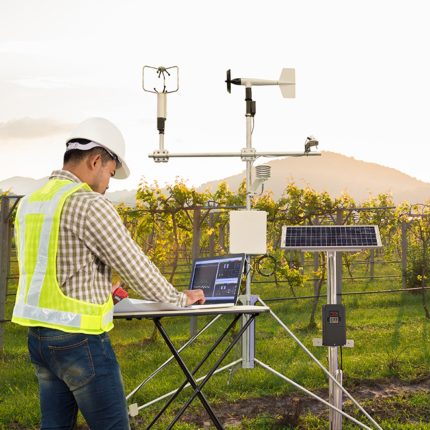Description
Overview of Asset Tracking Using BLE or RFID
Asset tracking systems utilizing RFID (Radio Frequency Identification) or BLE (Bluetooth Low Energy) technology offer efficient solutions for monitoring and managing valuable assets. RFID employs radio waves to identify and track assets equipped with RFID tags, enabling real-time visibility and location tracking. BLE technology, on the other hand, utilizes low-energy Bluetooth signals for asset monitoring, offering advantages such as longer battery life and compatibility with smartphones and tablets. Both systems enable organizations to streamline inventory management, enhance security, and optimize asset utilization. Asset tracking systems utilizing RFID or BLE provide valuable insights into asset movement, status, and usage, empowering businesses to make data-driven decisions for improved efficiency and productivity.
Applications in Asset Tracking Using BLE or RFID
- Inventory management
- Equipment tracking
- Supply chain management
- Vehicle tracking
- Healthcare asset tracking
- Retail asset tracking
- Library book tracking
- Document tracking
- Manufacturing asset tracking
- IT asset tracking
- Warehouse management
- Tool tracking
- Construction asset tracking
- Fleet management
- Apparel tracking
- Livestock tracking
- Oil and gas asset tracking
- Waste management tracking
- Pharmaceutical asset tracking
- Military asset tracking
- Cargo tracking
- Hazardous material tracking
- Rental equipment tracking
- Stadium asset tracking
- Museum artifact tracking
- Event asset tracking
- University asset tracking
- Laboratory equipment tracking
- Jewelry tracking
- Beverage tracking
Technical Specifications of Asset Tracking Using BLE or RFID
BLE Beacons or RFID Tags in Asset Tracking Systems
In asset tracking, RFID tags or BLE (Bluetooth Low Energy) beacons are strategically attached to assets to enable efficient monitoring and management. The placement of these tags or beacons depends on factors such as the type of asset, environment, and tracking requirements.
For RFID tags, they are commonly affixed directly onto assets using adhesive backing or cable ties. This ensures a secure attachment while minimizing interference with the asset’s operation. In some cases, RFID tags may be embedded within asset components or encased in protective housing for durability. For example, in inventory management, RFID tags can be adhered to product packaging or affixed to shelves for efficient tracking of goods.
BLE beacons, on the other hand, are typically placed in proximity to assets to broadcast their presence to nearby receivers such as smartphones or dedicated tracking devices. They can be installed on walls, ceilings, or equipment to provide location-based data without direct attachment to the asset itself. In large facilities or outdoor environments, multiple BLE beacons may be strategically deployed to ensure comprehensive coverage and accurate asset tracking.
BLE Gateways or RFID Readers in Asset Tracking Systems
Asset tracking systems utilize RFID readers or Bluetooth Low Energy (BLE) gateways strategically positioned to capture data from assets as they move through designated checkpoints.
In asset tracking deployments, RFID readers are often mounted at key locations such as entry/exit points, storage areas, or loading docks. These readers emit radio waves to communicate with RFID tags attached to assets. As assets pass within range, the reader detects the tags’ unique identifiers, enabling real-time tracking of their movements.
Similarly, BLE gateways are deployed in asset-tracking setups to capture signals from Bluetooth-enabled asset tags. These gateways are typically placed strategically throughout a facility, ensuring comprehensive coverage for tracking assets. BLE technology offers advantages such as lower power consumption and compatibility with smartphones and other devices equipped with Bluetooth capabilities.
Installation considerations for RFID readers and BLE gateways include factors such as optimal placement for maximum coverage, minimizing interference, and ensuring compatibility with existing infrastructure. Additionally, network connectivity must be established to transmit captured data to the Asset Tracking system for processing and analysis.
Cloud Systems
GAO Cloud BLE or RFID Systems consist of the following parts:
GAO BLE Gateways and Beacons and RFID Readers and Tags
BLE or RFID Cloud, Server, PC & Mobile
GAO Cloud Services Engine for BLE or RFID
Cloud Infrastructure, BLE & RFID Middleware, Data Analytics and Business Intelligence, and Security Measures.
Integration APIs
APIs enable seamless integration between the BLE or RFID solution and existing asset tracking systems such as POS, inventory management, and e-commerce platforms, allowing for data exchange and synchronization.
Server, PC & Mobile Systems
GAO Server, PC & Mobile Systems BLE or RFID Systems are composed of
BLE Gateways and Beacons, RFID Tags and Readers
GAO Server, PC & Mobile Software Engine for BLE & RFID
Servers, PCs, Mobile Computing Devices and Infrastructure, Middleware Software, and Database Management System.
Integration with Asset Tracking Systems
The server, PC & mobile solution integrates with existing asset tracking systems such as inventory management, point-of-sale (POS), and enterprise resource planning (ERP) systems. Integration is achieved through APIs, database connections, or middleware adapters, enabling seamless data exchange and synchronization.
All GAO’s RFID products are jointly offered by GAO Tek Inc. and its sister company GAO RFID Inc., ranked as a top 10 global RFID and IoT supplier. For RFID products on https://gaotek.com/, please visit RFID-BLE category, and its sub-categories: BLE Gateways, Beacons & Accs, UHF Readers, Tags & Accs, NFC & HF Readers, Tags & Accs, LF Readers, Tags & Accs, and BLE or RFID Cloud, Server, PC & Mobile.
You also are encouraged to visit gaorfid.com that offers a more comprehensive, more complete and different set of BLE & RFID products: BLE, RFID Readers, RFID Tags, Antennas & Accessories, RFID Systems, System By Feature.



